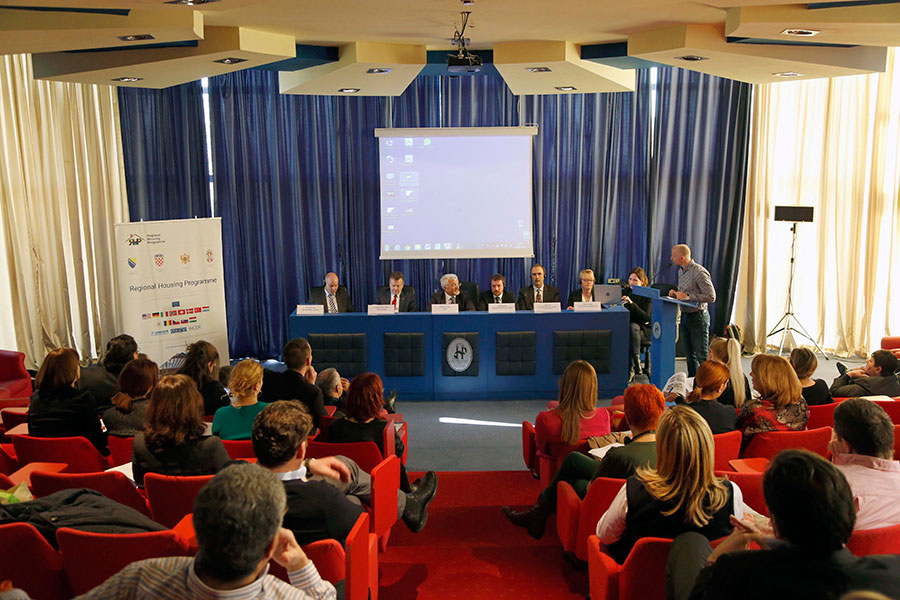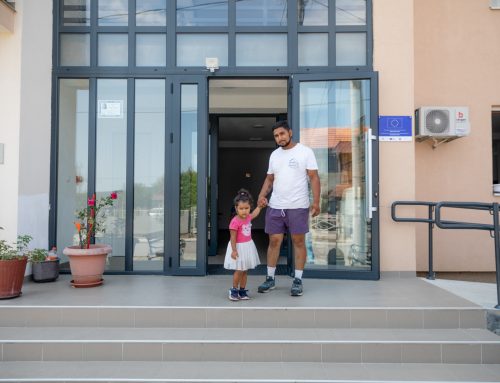The European Union is the biggest donor to the Regional Housing Programme, whereas Serbia is its biggest beneficiary, making the most of 56 percent of Programme’s budget aimed at finding durable housing solutions for refugees and displaced persons from former Yugoslavia.
By the end of 2019 there will have been 5,215 houses constructed in Serbia as durable housing solutions for refugees and the displaced following the 1991-1995 conflicts on the territory of former Yugoslavia. The funding for projects in Serbia comes from the RHP Fund to the tune of EUR87 million, EUR26.3 million of which have already been disbursed. The rest of the funding, EUR16.8 million, will be allocated through the national contribution – said Marja Seppala, Head of the Secretariat of the Regional Housing Programme of the CoE Development Bank.
“If the Programme continues to yield good results, the EU intends to allocate additional EUR20 million for Serbia in 2017,” said Head of Operations at the EU Delegation to Serbia Nicolas Bizel.
“Last summer, I visited two refugee families in Stara Pazova and Novi Banovci. One family received a prefabricated house, and the other received assistance in building materials. They appreciate the support they received, and now they can finally raise their children, peacefully in their own homes. By providing them with permanent housing, the vulnerable are provided with the basic conditions for progress. We hope that the efforts the EU is making in cooperation with our partners will also give a good example of building stronger regional cooperation. We will continue to support this programme, we have to work harder on its implementation, to be faster, to have good projects and to work together”, Bizel said.
The Regional Housing Programme is a joint initiative by Bosnia and Herzegovina, Croatia, Montenegro and Serbia aimed at finding durable housing solutions for refugees and the displaced. The RHP is implemented by national structures and funded through non-refundable donor pledges.
To date, the donors have pledged EUR269 million for the Programme. With EUR23 million, the EU is the biggest donor to the Programme, followed by the USA (EUR15 million), Germany (EUR6 million), Norway (EUR5.5 million), Switzerland (EUR5 million), Italy (EUR5 million), Denmark (EUR1,3 million), Turkey (EUR1 million) and Luxembourg (EUR0.5 million). The implementation of the Programme is coordinated by the CoE Development Bank, wheraes the UNHCR and OSCE support the Programme through monitoring of the beneficiary selection process and sustainability measures.
Total amount of grants approved amounts to EUR155 million intended for 22 projects in four countries. Of total amount, nearly EUR87 million is approved for Serbia.
2017 and 2018 will break the record in the number of people supported through the Programme – the plan is to provide as many as 7,000 housing solutions in all four countries.
According to Serbian Commissioner for Refugees and Migration Vladimir Cucic, the RHP is a fine example of the re-establishment of trust and the creation of partnerships in the region.
Among the participants in yesterday’s presentation of the RHP were Sam Healy, Regional Populations, Refugees and Migration Coordinator of the U.S. Embassy in Belgrade, John Andrew Young, Senior Protection Officer of the UNHCR Serbia and Jan Lueneburg, Head of Democratisation Department of the OSCE Mission to Serbia who concluded that the results of the RHP were not only about figures, but also about improving regional cooperation among the four countries and their citizens.
In 1996, Serbia hosted some 540,000 refugees from Bosnia and Herzegovina and Croatia. Nearly 200,000 refugees have chosen to undergo the process of local integration through the acquisition of citizenship of the Republic of Serbia, whereas around 37,000 persons received assistance through housing solutions. Despite these efforts, accommodation needs of the refugee population remain high and Serbia is meeting them through the Regional Housing Programme.




